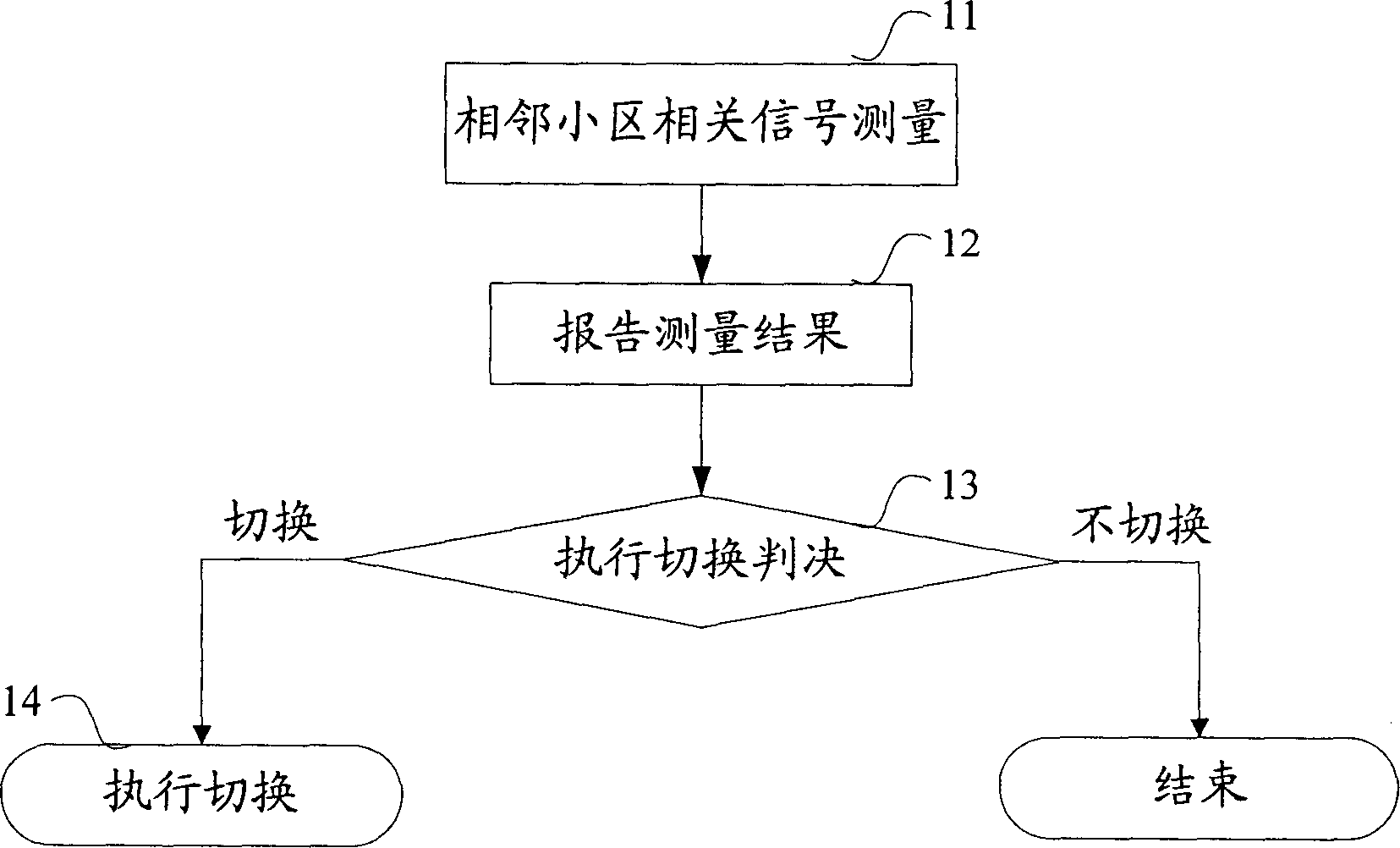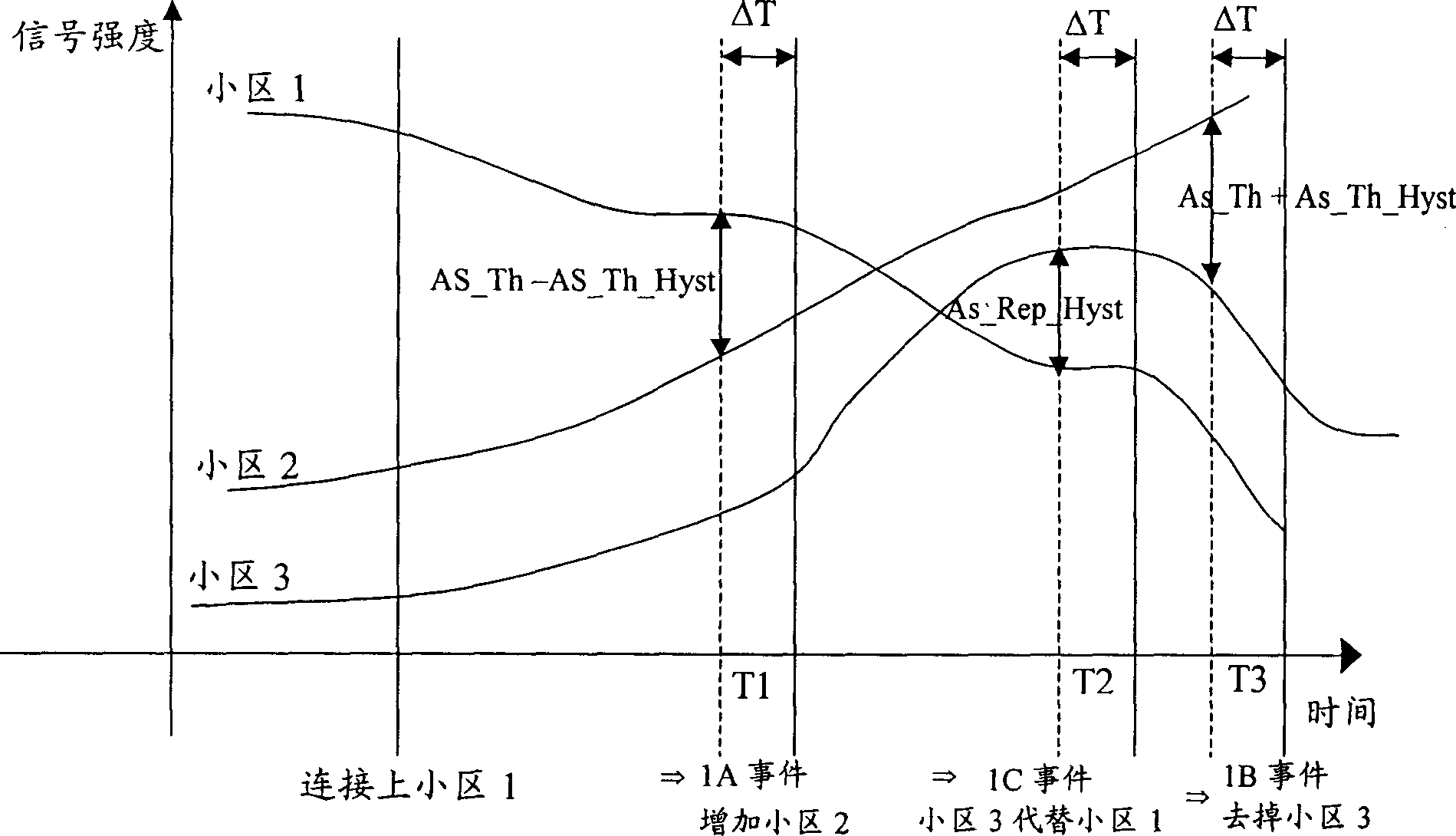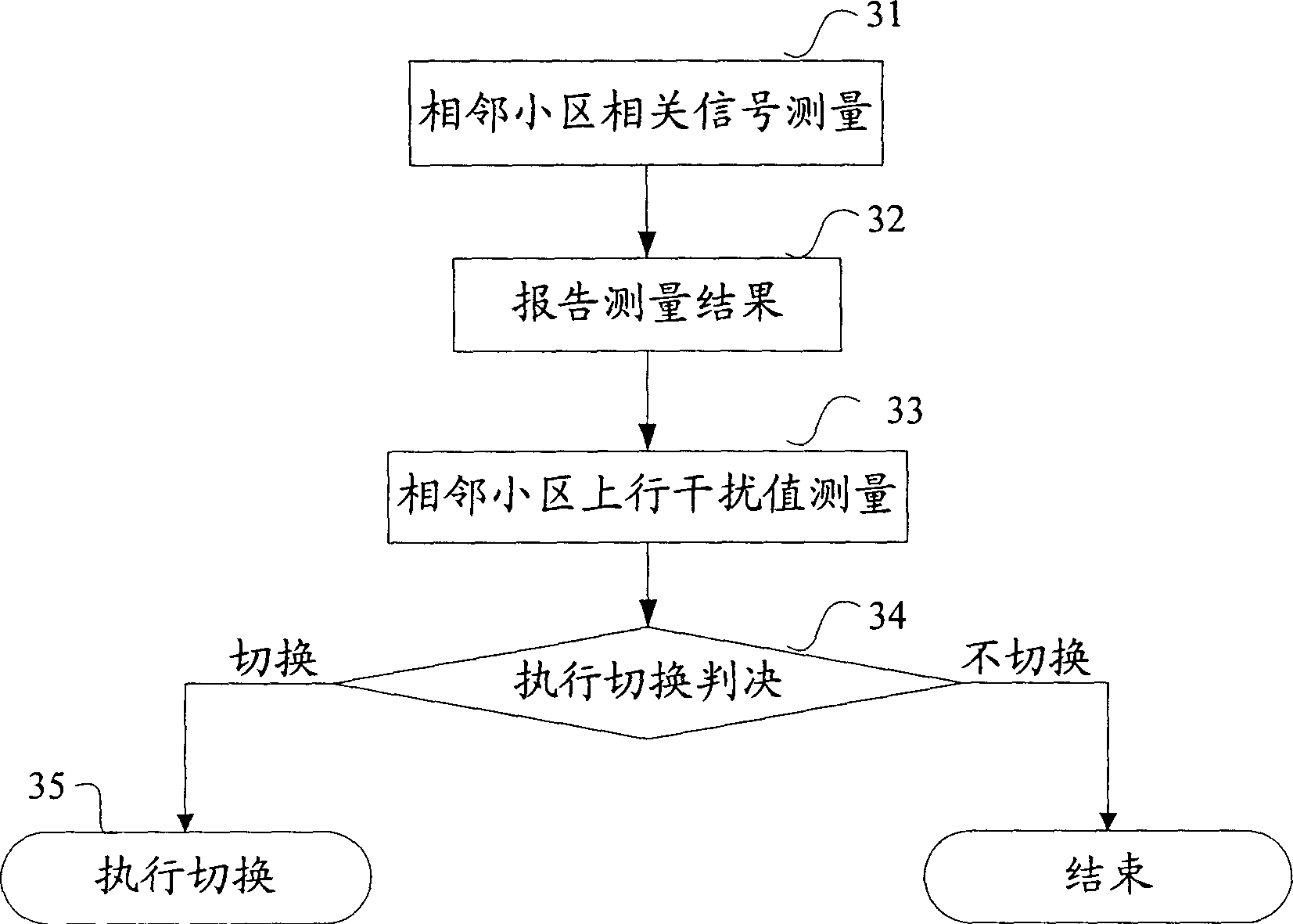Switching-over method
A judgment and measurement report technology, applied in electrical components, wireless communication, etc., can solve problems such as call drop, interference, and unsuccessful cell cut-in, so as to ensure normal operation and improve the success rate
- Summary
- Abstract
- Description
- Claims
- Application Information
AI Technical Summary
Problems solved by technology
Method used
Image
Examples
Embodiment Construction
[0030] In order to make the object, technical solution and advantages of the present invention clearer, the following examples are listed to further describe the present invention in detail.
[0031] The core idea of the present invention is: in the basic process of handover, not only according to the downlink pilot signal quality reported by the user terminal measurement, but also considering the external interference of the handover target cell, according to the size of the external interference value and The set interference threshold is used to make a handover decision and complete the handover process.
[0032] The method proposed by the invention can be applied in various mobile communication systems, such as WCDMA, Universal Mobile Telecommunications System (UMTS), GSM, and CDMA. Now take the implementation of the handover method proposed by the present invention in a WCDMA system as an example for illustration, and this handover method is a soft handover method. The...
PUM
 Login to View More
Login to View More Abstract
Description
Claims
Application Information
 Login to View More
Login to View More - R&D
- Intellectual Property
- Life Sciences
- Materials
- Tech Scout
- Unparalleled Data Quality
- Higher Quality Content
- 60% Fewer Hallucinations
Browse by: Latest US Patents, China's latest patents, Technical Efficacy Thesaurus, Application Domain, Technology Topic, Popular Technical Reports.
© 2025 PatSnap. All rights reserved.Legal|Privacy policy|Modern Slavery Act Transparency Statement|Sitemap|About US| Contact US: help@patsnap.com



